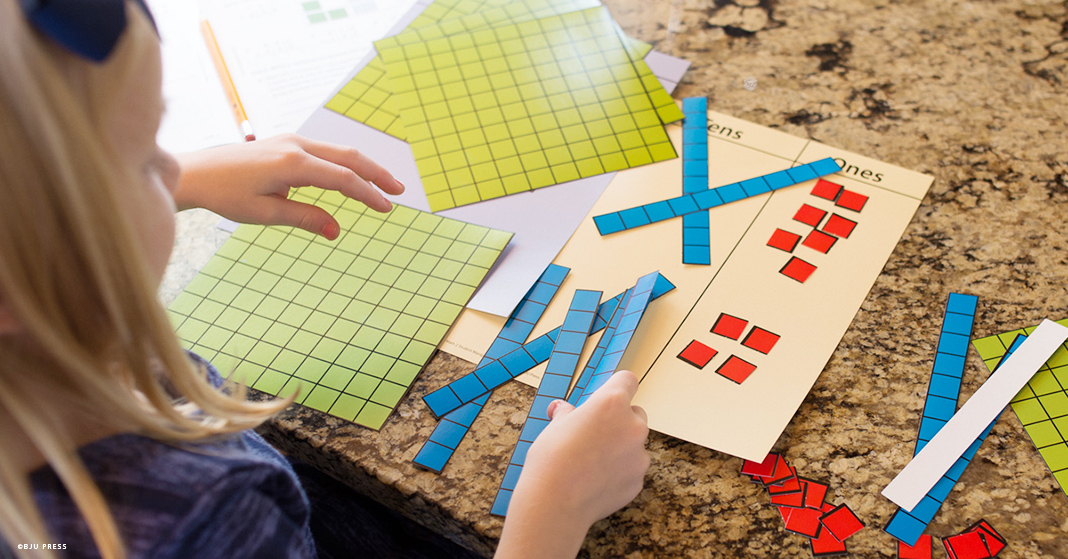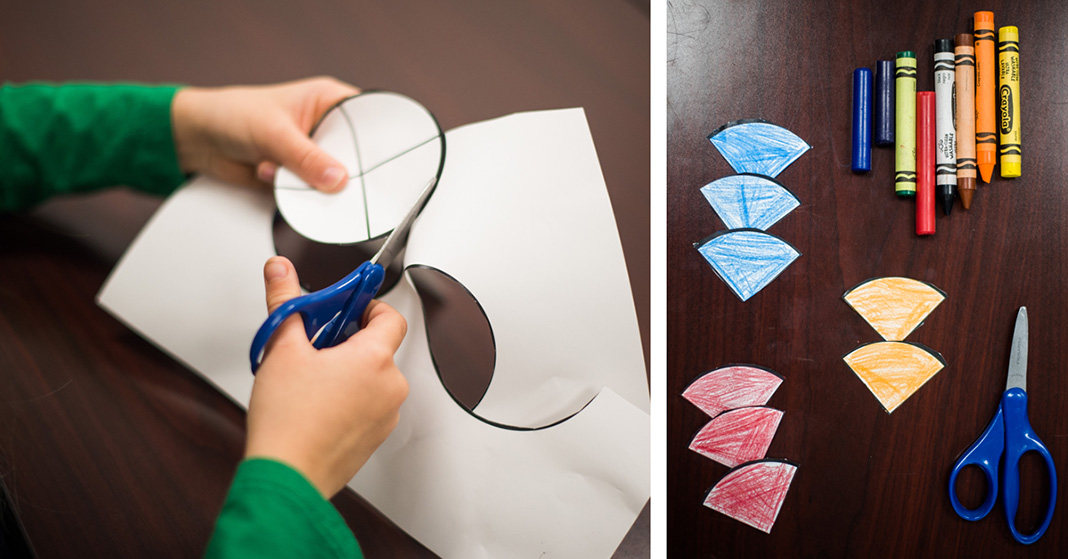
The twelve-year-old’s T-shirt reminded me of my own homeschool experience with fractions and made me chuckle with delight. The shirt said, “Did you know that 5 out of 4 people struggle with fractions?”
When I was in the upper elementary grades, my mom switched us from a homeschool math program that used a hands-on approach to a program that was trendy among homeschool families at the time. It was during that phase of my math education that fractions became increasingly difficult. I had to multiply and divide with fractions, and it was all so confusing. Why is it that when I multiply, I get a smaller number, but when I divide, I get a larger number?
I think the hands-on approach would have helped me understand the basic arithmetic of fractions. If your child is struggling with dividing fractions, try the following hands-on approach to see if it helps. (I found this activity in BJU Press’s Math 6 textbook, which has lots more hands-on activities for teaching fractions and other challenging math concepts.)
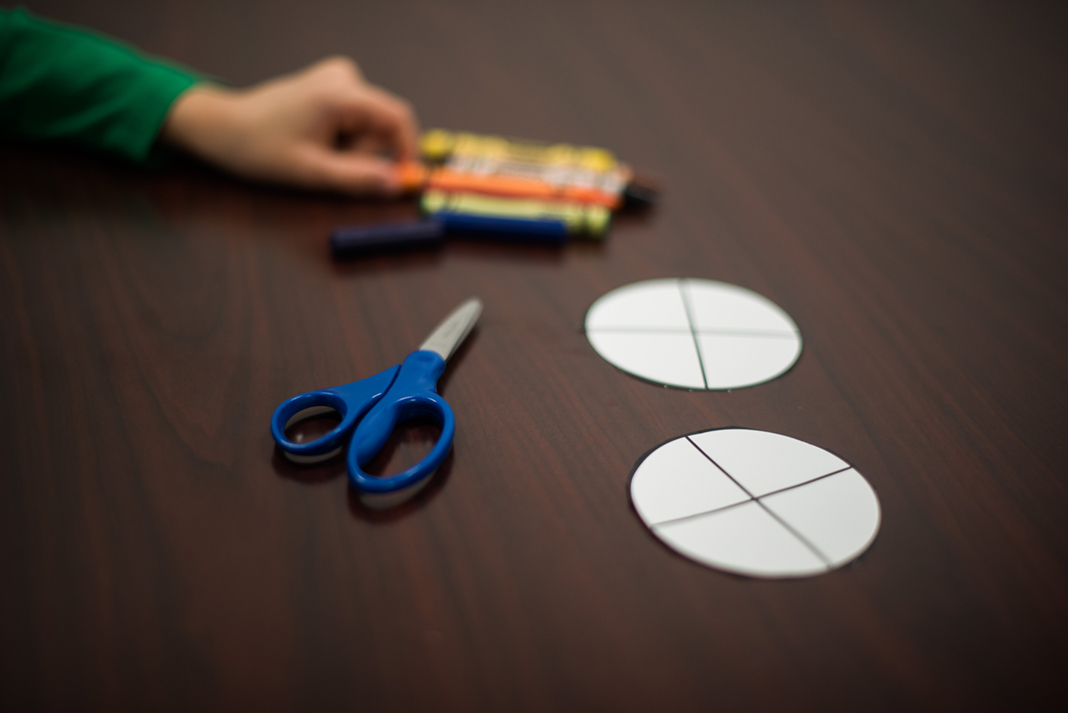 Instructions
Instructions
- Print out these circles and have your child cut along the outer solid lines. (Note: You can also use two apples instead.)
- We’re going to work through the problem 2 ÷ ¾, but that’s rather abstract, so let’s use a real-world problem.
“We want to make apple tarts. Each tart requires ¾ of an apple. We have two apples. How many tarts can we make?”
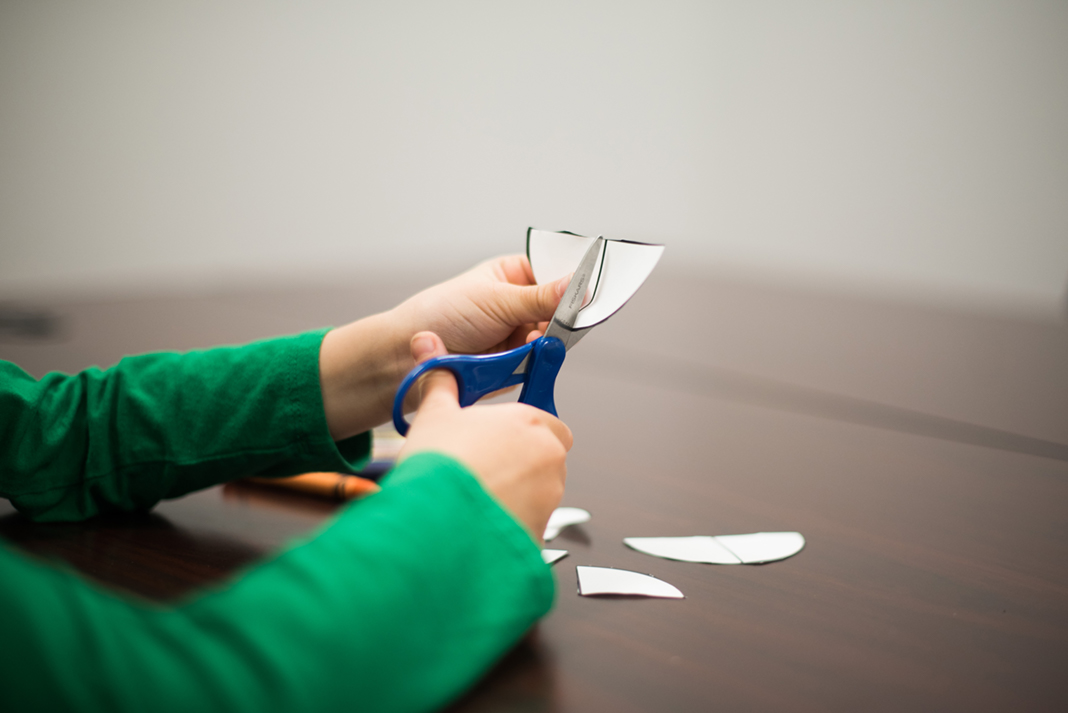
- Start with the two complete circles. These represent the number of apples we have.
- Ask: “How do we need to cut the apples to make the tarts?” Since we’re going to need to separate out ¾ of an apple, the answer is “into quarters” or “into fourths.”
- Now cut the whole circles into fourths.
- Ask your child: “How many fourths are needed for each tart?”
- Now have your child separate the fourths into piles of three.
- Ask: “How many piles of three do you have?” Answer: 2
- Ask: “How many quarters are left?” Answer: 2
Expressing the Answer
This might be tricky, but we want to express the exact number of tarts we can make. We could answer, “Two tarts,” but we would have two fourths or ½ an apple left over.” If we want to make a tart with the remaining apple fourths, how much of a tart could we make? We would say, “Two and two-thirds tarts.” This confused me as a child. Why would I use thirds when I started with fourths? Walk your child through these questions to help with understanding:
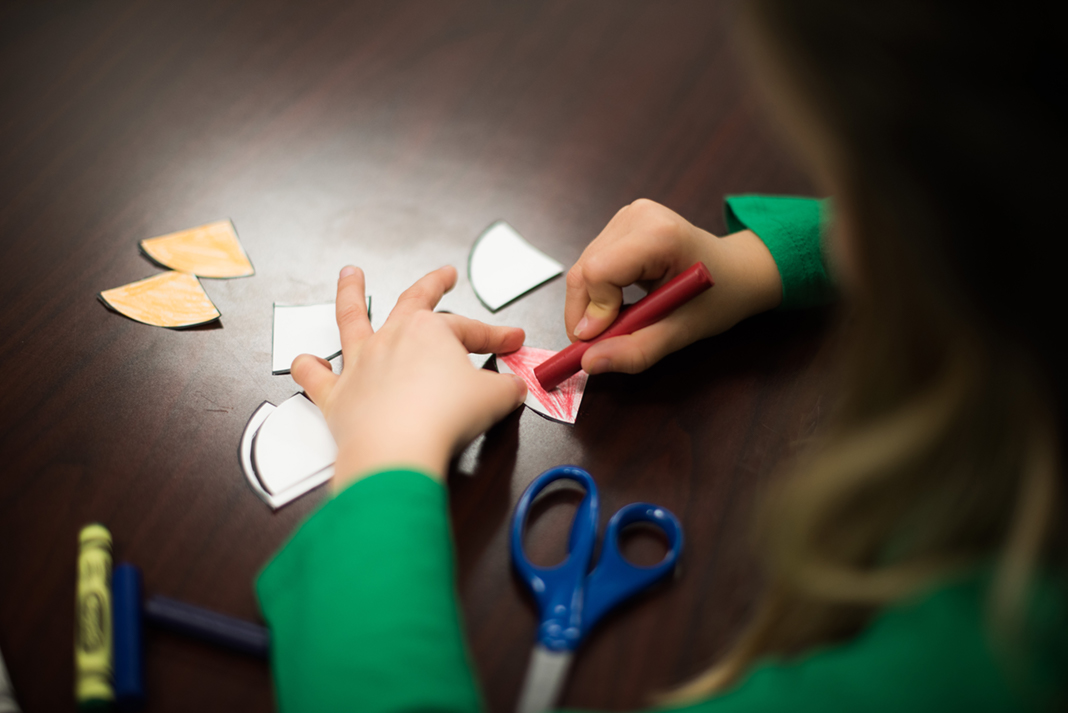
- Ask: “How many fourths do we need to make a whole tart?” Answer: 3
- Ask: “How many fourths do we have left?” Answer: 2
- Ask: “If it takes three to make a whole tart, and we have two of the three to make a whole one, how would we write that as a fraction?” Help your child see that the bottom number of the fraction tells us how many parts make a whole, and the top number tells us how many parts of that whole we have. So the whole tart has three parts (apple fourths), and we have two of those three parts or ⅔.
- So we can make 2⅔ apple tarts with 2 apples.
- Have your child color each group of three fourths and the two remaining fourths a different color so they can see which group of fourths will go into each tart.
- Help your child write out how this would look as a math problem and solution: 2 ÷ ¾ = 2⅔.
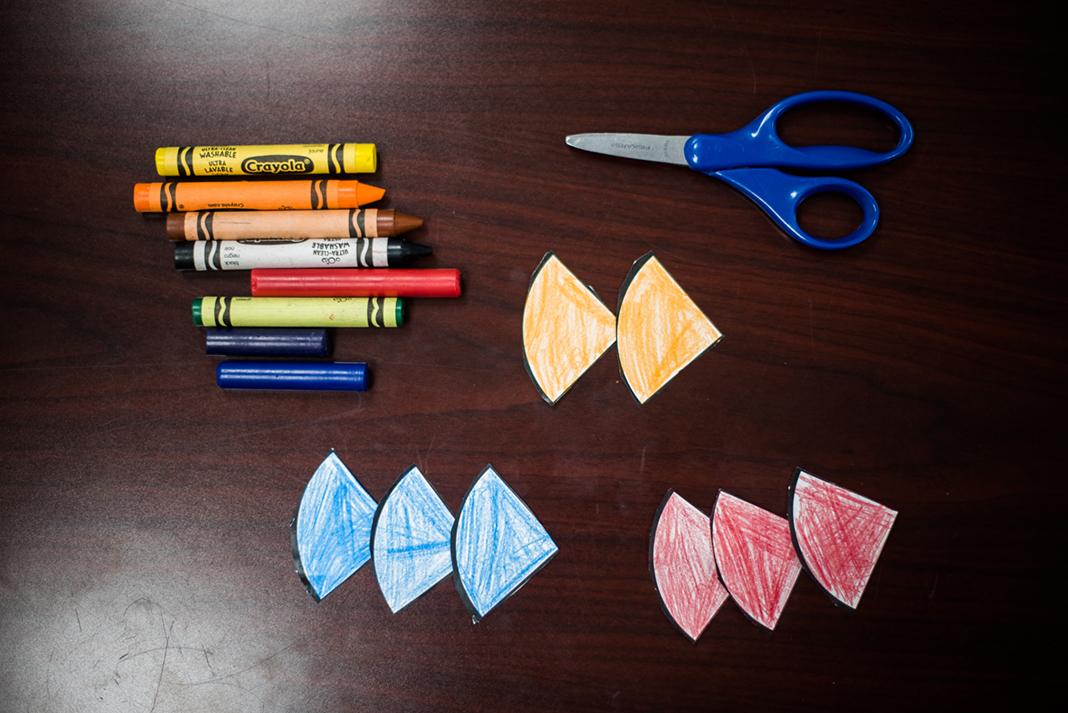 Why Hands-On Works
Why Hands-On Works
Working through this activity helped me understand some math that always challenged me as a child and into adulthood. Using hands-on activities helps many of us understand math. That’s because math is an expression of physical realities. When we see, touch, and talk about those physical objects that math is representing, the math makes more sense.
So if your child is struggling with fractions, try this and some other hands-on activities.
